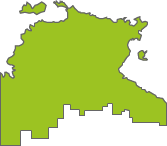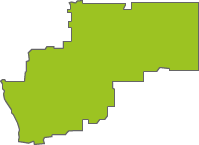Announcements
Yesterday
Dear NatureMapr Moderator Community,We’re excited to share a new feature aimed at saving you time when providing constructive feedback to contributors.You’ll now see "Moderator Quick Response" buttons...
Continue reading
New priority species lists in the ACT
NatureMapr now receives more records in NSW than ACT
NatureMapr Data Collector 6.2.1 update
Critical nature positive infrastructure update
Discussion
RangerGregor
wrote:
20 min ago
Hi Tim, Thanks for reporting the Jack Jumpers. Looks like section 194 on the map, does that sound about right? Cheers
Myrmecia sp., pilosula-group
AlisonMilton
wrote:
44 min ago
Hi, Yesterday I watched a European Wasp attacking a European Honey Bee in the grass on my front lawn. It came back several times and it seemed the bee was slowly dying as it struggled in the grass for some time. By the time I got my camera the wasp didn't come back. I presumed that since the wasps like sweet things that it might have been stealing the pollen from the bee, but killed the bee in the process.
Boreoides subulatus
Curiosity
wrote:
49 min ago
Hi GITM1. I, too, have wondered why the wasps were attaching the soldier flies. Canberra NatureMapr has a good description of the behaviour for Vespula germanica (European Wasp). After reading it, I think the wasps' attacks on the soldier flies could be just an example of their usual aggressive behaviour toward other insects. I've been seeing quite a few of these social wasps around the yard & nearby.
Boreoides subulatus
Liam.m
wrote:
54 min ago
Hi @Lovey, thanks for your sighting. The media you provided is missing or unclear. To help us verify this sighting, please provide additional media.
Ardea pacifica
WendyEM
wrote:
57 min ago
I was initially thinking this was a little one but I think that impression is due to the perspective. The big 'fleshy arms' leads me to Aenetus sp. I noticed the other day A. eximia has yellow examples on-line. see
https://inaturalist.ala.org.au/observations/252925560
https://inaturalist.ala.org.au/observations?verifiable=true&taxon_id=516142&place_id=6744&preferred_place_id=6744
BOLD specimens are tricky colour-wise as blue/green fades really quickly in preserved moths.
https://bold-au.hobern.net/specimens.php?taxid=328464
https://inaturalist.ala.org.au/observations/252925560
https://inaturalist.ala.org.au/observations?verifiable=true&taxon_id=516142&place_id=6744&preferred_place_id=6744
BOLD specimens are tricky colour-wise as blue/green fades really quickly in preserved moths.
https://bold-au.hobern.net/specimens.php?taxid=328464
Aenetus eximia
Significant sightings
- Dysphania glomulifera subsp. glomulifera at Anglers Reach, NSW
- Walwhalleya subxerophila at Franklin, ACT
- Plectorhyncha lanceolata at Higgins, ACT
- Sceptridium australe at Wyanbene, NSW
- Austrochloritis abrotonus at Berlang, NSW
- Sphaeniscus atilius at Melba, ACT
- Keyacris scurra at Manar, NSW
- Sardia rostrata at Melba, ACT
- Bossiaea grayi at Kambah, ACT
- Bossiaea grayi at Kambah, ACT
Recent activity
Top contributors
- AlisonMilton 16K
- trevorpreston 15.4K
- Hejor1 12.5K
- Tapirlord 11.3K
- MichaelBedingfield 10.7K
- RodDeb 10.2K
- Mike 9.7K
- kasiaaus 9.4K
- ConBoekel 8.6K
- KylieWaldon 8K
Top moderators
- MichaelMulvaney 55K
- Tapirlord 38.2K
- MichaelBedingfield 21.8K
- Liam.m 19.1K
- donhe 17.2K
- natureguy 15.6K
- ibaird 14.5K
- AlisonMilton 10.7K
- MatthewFrawley 10K
- BettyDonWood 8.2K
Explore Australia by region
Australian Capital Territory
Canberra & Southern TablelandsNew South Wales
Southern HighlandsAlbury, Wodonga
Canberra & Southern Tablelands
South Coast
Greater Sydney
Hunter Region
Central West NSW
Riverina Murray
New England
Far West New South Wales
New South Wales North Coast
Northern Territory
Top End and Big RiversCentral and Barkley































































































































































































